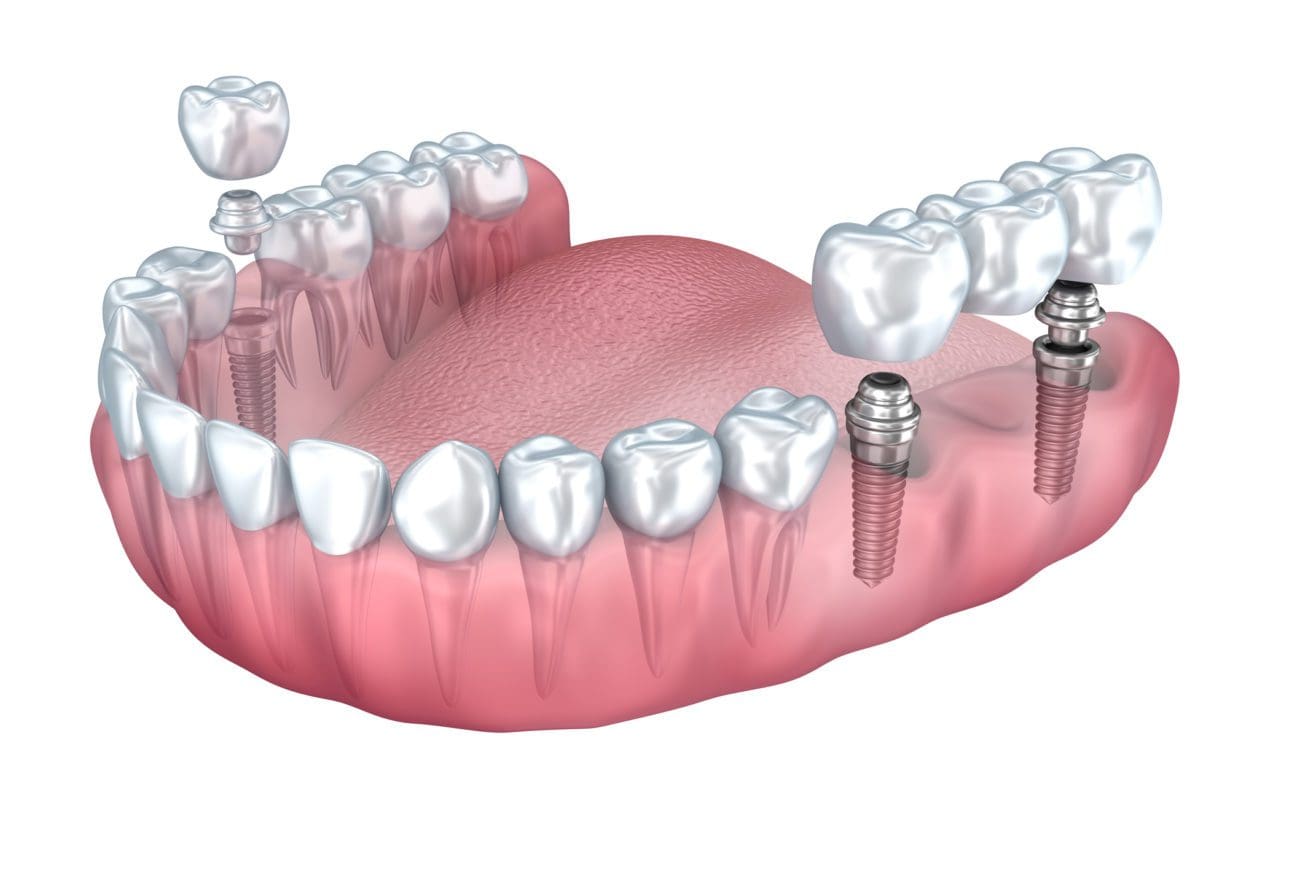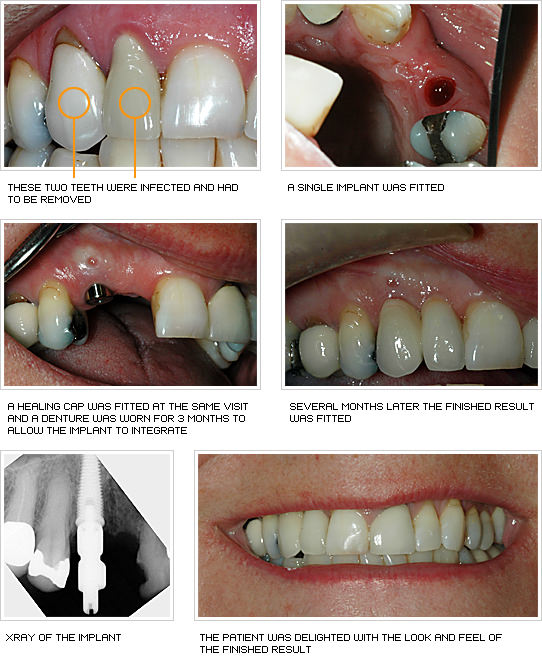See This Report on Dental Sense
Table of ContentsThe Only Guide to Dental SenseThe Basic Principles Of Dental Sense Dental Sense Can Be Fun For AnyoneThe 5-Minute Rule for Dental Sense
are clinical gadgets operatively implanted right into the jaw to recover a person's ability to eat or their appearance. They provide assistance for artificial (phony) teeth, such as crowns, bridges, or dentures. When a tooth is shed due to injury or disease, a person can experience complications such as rapid bone loss, malfunctioning speech, or adjustments to chewing patterns that lead to pain.Oral dental implant systems contain an oral implant body and dental implant abutment and might additionally consist of a joint addiction screw. Dental veneers cost. The oral implant body is surgically inserted in the jawbone in place of the tooth's origin. The oral implant abutment is normally affixed to the implant body by the joint addiction screw and expands with gums right into the mouth to support the affixed fabricated teeth
(https://medium.com/@matthewmusic33101/about)Structure of The Oral Implant System picking oral implants, talk with your dental service provider about the prospective advantages and threats, and whether you are a candidate for the procedure. Points to consider: Your general health and wellness is a crucial aspect in determining whether you are an excellent prospect for dental implants, how much time it will require to heal, and the length of time the dental implant might stay in place.
Smoking may impact the healing process and decrease the long-lasting success of the dental implant. The healing procedure for the implant body may take a number of months or longer, throughout which time you generally have a temporary abutment in area of the tooth. the oral implant procedure: Thoroughly follow the oral health guidelines provided to you by your dental service provider.
Not known Incorrect Statements About Dental Sense
Implant failure can lead to the demand for one more procedure to deal with or change the implant system. Restores the capability to chew Brings back cosmetic appearance Helps maintain the jawbone from reducing because of bone loss Preserves the wellness of the surrounding bone and gum tissues Assists keep adjacent (neighboring) teeth secure Enhances lifestyle Damages to surrounding all-natural teeth throughout implant positioning Injury to the surrounding cells throughout surgical procedure, such as sinus perforation Injury throughout surgical procedure (as an example, crack of bordering jawbone) Insufficient function, such as really feeling like the teeth do not bite together generally A sensation that the tooth hangs or twisting in position resulting from an abutment screw loosening up Implant body failing (looseness of the dental implant body) as a result of systemic infection, which may be more likely in people with unchecked diabetes because of neighborhood infection in bone and gum tissues supporting the dental implant body due to delayed healing, which may be most likely in patients who smoke Trouble cleaning up the gums around the dental implant, resulting in inadequate oral health Neglected gum disease Post-surgical numbness because of nerve impingement or damages Always alert healthcare suppliers and imaging professionals that you have oral implants prior to any kind of magnetic vibration imaging (MRI) or x-ray treatments.
FDA is not aware of any kind of damaging occasions reported for MRI or x-ray procedures with oral implants. Dental implants systems are normally constructed from materials that adhere to worldwide agreement requirements of the International Company for Standardization (ISO) or ASTM International. These requirements have details of what makes a risk-free product.

A dental implant is a framework that changes a missing out on tooth. With screw-like gadgets, the cosmetic surgeon inserts a dental implant right into the jawbone, and it acts as an anchor for a fabricated tooth, called a crown.
The Best Guide To Dental Sense
Some people are not qualified for oral implant surgery. It is for dental doctors to operate on people with: acute illnessuncontrollable metabolic diseasebone or soft cells condition or infectionIf these issues are solved, an individual can have the surgery. In, oral doctors avoid operating individuals with: If people with any of the above undergo oral implant surgical treatment, there is a greater threat of the dental implant falling short.

Oral implant surgical procedure is an individualized procedure. It's not the exact same for everybody. Yet the following gives a general introduction of what you can expect your dental expert, dental doctor, periodontist or prosthodontist to do: Put the implant operatively. Provide you time to recover. Attach the message and last crown, bridge or denture.
Next off, your specialist will very carefully place the oral implant into your jaw. If your dental implant is near the front of your mouth, your dental professional will certainly make a short-term tooth for you to put on until you recover.
Dental Sense Things To Know Before You Buy
Your company can tell you what to expect in your circumstance. During the recovery stage, your jawbone must fuse to the dental implant. This process, called osseointegration, is critical for security and long-lasting success. This procedure can take anywhere from 3 to nine months. In many cases, it may take much longer.
Once your dental implant heals, your dental practitioner can attach the abutment (small port post) and your final repair (crown, bridge or denture). This typically find out here now takes about one hour to complete and might call for a 2nd small surgery. You shouldn't really feel any type of pain during your oral implant procedure since your supplier will certainly make use of medication to numb your gum tissues.